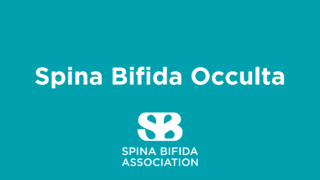Spina Bifida is the most common permanently disabling birth defect that is associated with life. Approximately 166,000 individuals in the United States have Spina Bifida.
It’s a type of neural tube defect (NTD) that occurs when a baby’s neural tube fails to develop or close properly – the literal meaning for Spina Bifida is “split spine.” Typically occurring within the first 28 days of pregnancy while the neural tube is forming, Spina Bifida often occurs before a woman knows she is pregnant.
Commonly referred to as the “snowflake condition” of birth defects because no two cases are the same, Spina Bifida can range from mild to severe. The severity depends on everything from the size of the opening to the location on the spine.
What Causes Spina Bifida?
No one knows for sure. Doctors and scientists believe that a complex mix of both genetic and environmental factors act together to cause the condition. Are you an expectant parent? Click here for resources and information that might be of benefit to you.
Can Spina Bifida Be Detected Before Birth?
Yes. There are three tests, but, it is important to remember that no medical test is perfect and the results are not always 100 percent accurate. Spina Bifida can be detected in utero by one of the following tests:
- A blood test during the 16th to 18th weeks of pregnancy. This is called the alpha-fetoprotein (AFP screening test). This test is higher in about 75–80 percent of women who have a fetus with Spina Bifida.
- An ultrasound of the fetus. This is also called a sonogram and can show signs of Spina Bifida such as the open spine.
- A test where a small amount of the fluid from the womb is taken through a thin needle. This is called maternal amniocentesis and can be used to look at protein levels.
Types of Spina Bifida
The three most common types of Spina Bifida are:
Spina Bifida Occulta
It is often called “hidden Spina Bifida” because about 15 percent of healthy people have it and do not know it. Spina Bifida Occulta (SBO) usually does not cause harm, and has no visible signs. The spinal cord and nerves are usually fine. People find out they have it after having an X-ray of their back. It is considered an incidental finding because the X-Ray is normally done for other reasons. However, in a small group of people with SBO, pain and neurological symptoms may occur. Tethered cord can be an insidious complication that requires investigation by a neurosurgeon.
Meningocele
Meningocele causes part of the spinal cord to come through the spine like a sac that is pushed out. Nerve fluid is in the sac, and there is usually no nerve damage. Individuals with this condition may have minor disabilities.
Myelomeningocele (Meningomyelocele), also called Spina Bifida Cystica
This is the most severe form of Spina Bifida. It happens when parts of the spinal cord and nerves come through the open part of the spine. It causes nerve damage and other disabilities. Seventy to ninety percent of children with this condition also have too much fluid on their brains. This happens because fluid that protects the brain and spinal cord is unable to drain like it should. The fluid builds up, causing pressure and swelling. Without treatment, a person’s head grows too big, and may have brain damage. Children who do not have Spina Bifida can also have this problem, so parents need to check with a doctor.
Other variations of Spina Bifida include:
-
Occult Spinal Dysraphism (OSD)
- Lipomyelomeningocele
- Fatty Filum Terminale
- Split Cord Malformation
- Terminal Myelocystocele
How is Spina Bifida treated?
Treatment for Spina Bifida depends on the severity of the condition. Below are the ways in which Spina Bifida is treated before or shortly after birth.
-
-
- A child with Meningomyelocele usually is operated on within two to three days of birth. This prevents infections and helps save the spinal cord from more damage.
- A child with Meningocele usually is treated with surgery, and more often than not, the child is not paralyzed. Most children with this condition grow up without complications, but they should be checked by a doctor because they could have other serious problems, too.
- A child with OSD should see a surgeon. Most experts think that surgery is needed early to keep nerves and the brain from becoming more damaged as the child grows.
- Spina Bifida Occulta typically does not require treatment.
-
Prevention
While there is no known cause, it has been shown that women who are old enough to have babies should take folic acid before and during the first three months of pregnancy. Because half of the pregnancies in the United States are unplanned, the Spina Bifida Association asks women to take a vitamin with 400 mcg (0.4 mg) of folic acid each day during the years of their lives when they are possibly able to have children.
Additionally, women who have a child or sibling with Spina Bifida, have had an affected pregnancy, or have Spina Bifida themselves should take 4000 mcg (4.0 mg) of folic acid for one to three months before and during the first three months of pregnancy. Research shows the likelihood of having a second baby with Spina Bifida is about three percent. It’s important to know that neural tube defects like Spina Bifida are not entirely understood, and Spina Bifida is not something that is caused by the actions of the parents. It is recommended that adults with Spina Bifida and couples who already have a child with Spina Bifida talk with their OB-GYN or genetic counselor about their risk factors and ways to reduce the risk.
Resources
Seeking additional information? Contact our National Resource Center at [email protected].
-
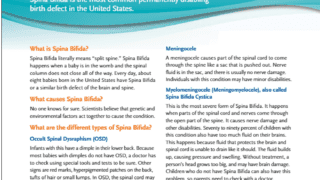 resource
resourceWhat is Spina Bifida?
-
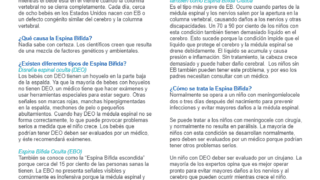 resource
resource¿Qué es la Espina Bífida?
-
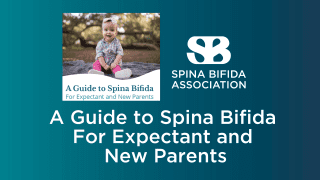
-
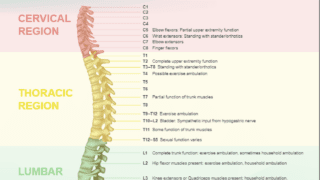 resource
resourceLevel of SB Function


